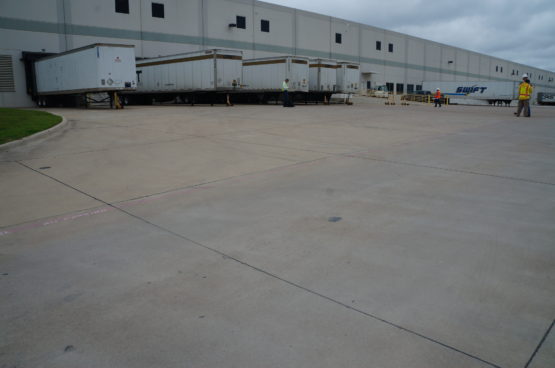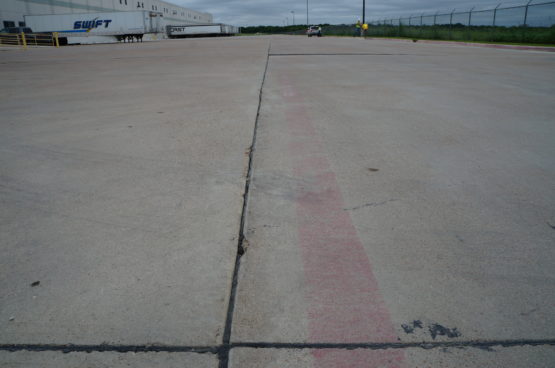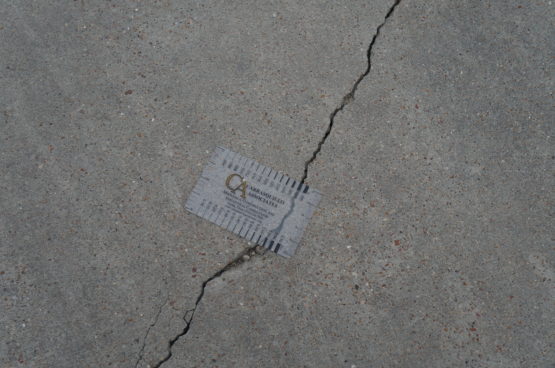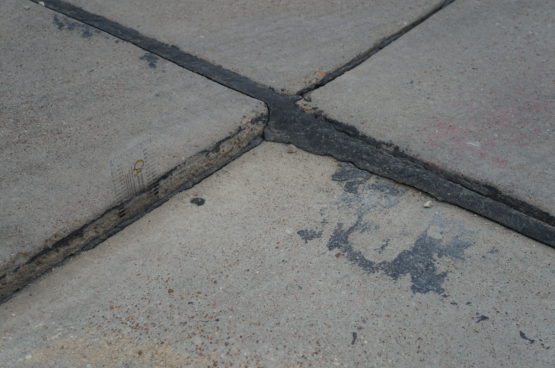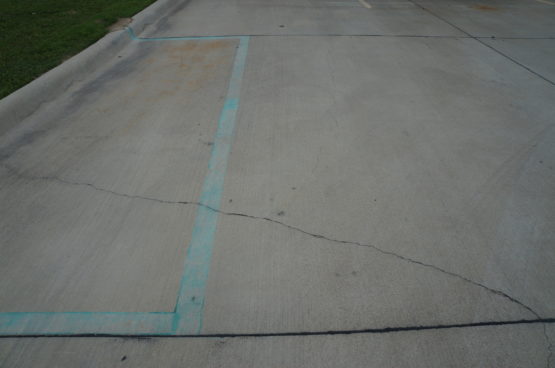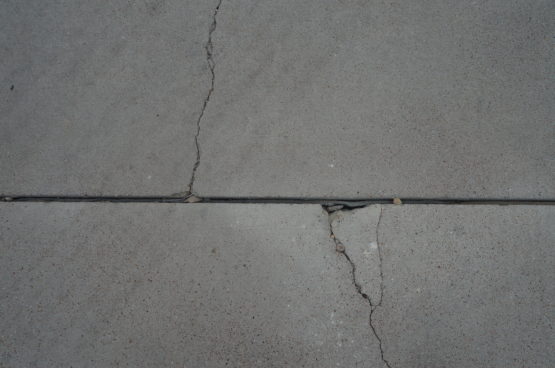Progressive Distress Mechanism in Industrial Concrete Pavement
Carrasquillo Associates investigated distress in a 1,000,000 square foot concrete trucking pavement. CA’s investigation revealed two key findings. First, CA’s periodic condition surveys utilizing ASTM and FHWA practices provided clear evidence of a progressive distress mechanism. This distress mechanism began with joint sealant degradation and proceeded to water penetration, pumping, corner breaks, loss of support and faulting, and finally a completely broken pavement section. Second, CA determined that the rigid base which utilized on-site materials was mischaracterized as limestone during construction. In actuality, the base material was marl, which has a strength and appearance similar to limestone, but is moisture-sensitive, meaning strength is lost when the moisture content increases. In summary, CA’s investigation revealed that the failure to perform maintenance at the first manifestation of distress caused the premature pavement failures as a result of an improper base material
Carrasquillo Associates investigated distress in a 1,000,000 square foot concrete trucking pavement. CA’s investigation revealed two key findings. First, CA’s periodic condition surveys utilizing ASTM and FHWA practices provided clear evidence of a progressive distress mechanism. This distress mechanism began with joint sealant degradation and proceeded to water penetration, pumping, corner breaks, loss of support and faulting, and finally a completely broken pavement section. Second, CA determined that the rigid base which utilized on-site materials was mischaracterized as limestone during construction. In actuality, the base material was marl, which has a strength and appearance similar to limestone, but is moisture-sensitive, meaning strength is lost when the moisture content increases. In summary, CA’s investigation revealed that the failure to perform maintenance at the first manifestation of distress caused the premature pavement failures as a result of an improper base material

